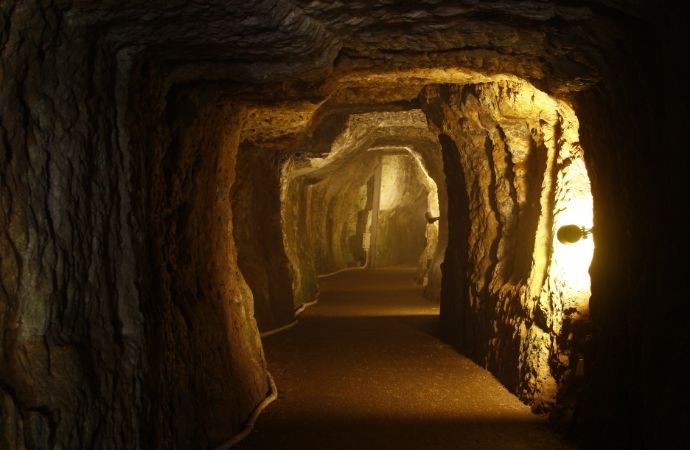
IWAMIGINZAN AREA SIGHTSEEING SPOTS
Surrounded by nature, "Ishigami Ginzan" is a popular spot as a World Heritage Site. The townscape is full of nostalgic atmosphere, and there are many photo spots.
Known as the "City of Water," Matsue is home to the National Treasure Matsue Castle. A leisurely ride on a sightseeing boat through the castle’s inner and outer moats offers views of the charming castle town scenery. The sunset over Lake Shinji is so breathtaking it has been selected as one of the Top 100 Sunsets in Japan. In addition, the area is rich with attractions such as spiritual power spots and beautiful Japanese gardens, making it a destination you can enjoy from morning to evening.
SPOT - 01
Matsue Castle
Matsue Castle was built over a period of five years, from 1607 (Keichō 12) to 1611 (Keichō 16), by Lord Horio Yoshiharu, the founder of Matsue.
Due to its impressive irimoya-style gabled roof, which resembles a plover spreading its wings, the castle is also known by the nickname “Chidori-jō” (Plover Castle).
From the castle tower (tenshukaku), visitors can enjoy a 360-degree panoramic view of the city of Matsue.
In July 2015, Matsue Castle was officially designated as a National Treasure.
The surrounding area features well-maintained walking paths, allowing visitors to enjoy seasonal scenery such as azaleas and camellias throughout the year.
During cherry blossom season, the Castle Festival is held, attracting many visitors who come to enjoy hanami (flower viewing).
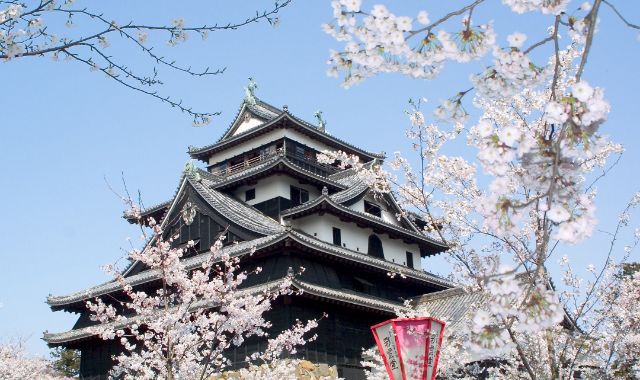
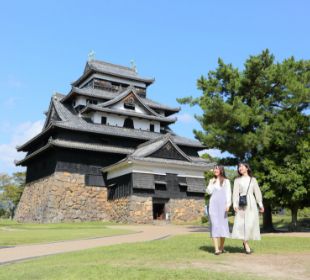
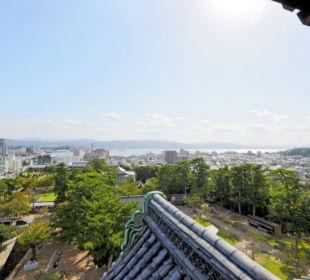
SPOT - 02
Gurutto Matsue Horikawa Meguri (Horikawa Sightseeing Boat Tour)
The Horikawa Sightseeing Boat Tour is a relaxing 50-minute cruise that takes you around the 3.7 km moat surrounding Matsue Castle in a small traditional-style boat.
As you enjoy the ride, the boatman provides guided commentary, taking you past historical and scenic spots such as the Matsue Castle keep, samurai residences, and the charming Shiomi Nawate Street.
Every year from September to October, the Matsue Suitōro (Water Lantern Festival) is held. Lanterns are placed along the Horikawa River, enveloping the entire area in a magical, glowing atmosphere.
During the festival, evening boat tours are also offered, allowing passengers to enjoy views of Matsue Castle and Shiomi Nawate Street beautifully illuminated at night.
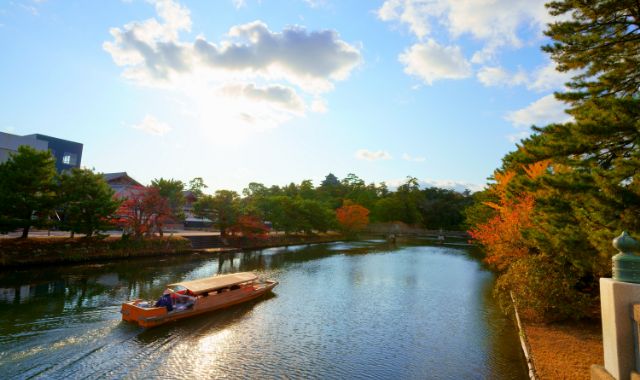
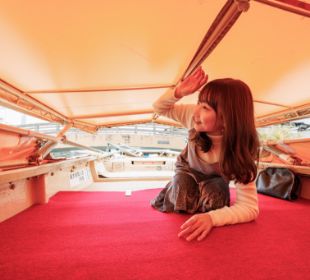
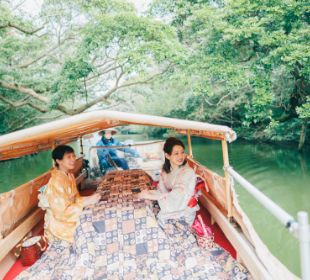
SPOT - 03
Lake Shinji
Lake Shinji is the seventh largest lake in Japan and a well-known stopover site for migratory birds, making it a great spot for birdwatching.
Its stunning sunsets have been selected as one of the Top 100 Sunsets in Japan, and the Shimane Art Museum, located on the lakeshore, is a particularly popular spot to enjoy the beautiful evening views over the water.
The “Shinjiko Shicchin” (Seven Delicacies of Lake Shinji) are a celebrated part of Shimane’s local cuisine, made from ingredients caught in the lake.
Among them, the Yamato shijimi (freshwater clam) is especially popular. It is often enjoyed in miso soup, tsukudani (soy-simmered dishes), and other processed products, making it a favorite souvenir for visitors.
Yomegashima, a small island in Lake Shinji, is home to a shrine dedicated to Benzaiten and features a torii gate and pine trees growing along its shores.
The island’s name is said to originate from a tragic legend about a young bride. Because the water around the island is shallow, a special walking event is held several times a year, allowing participants to walk across to the island from the shore.
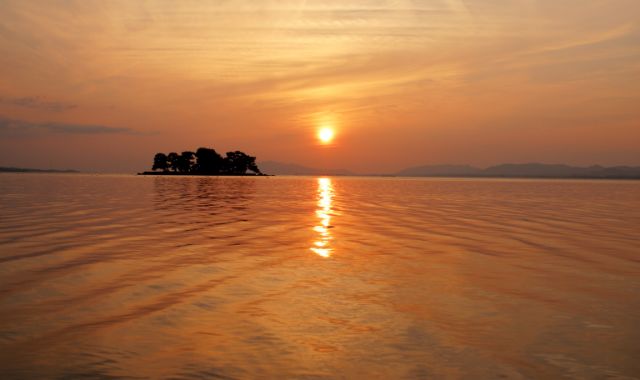
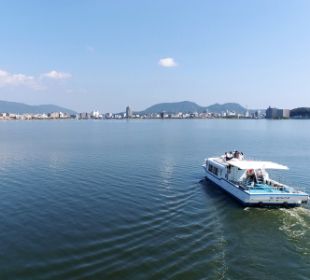
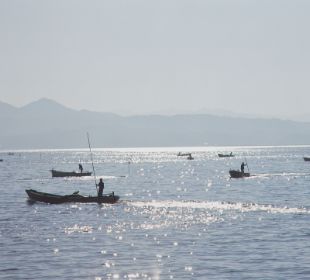
SPOT - 04
Shimane Art Museum
An elegantly designed museum standing on the shores of Lake Shinji, the Shimane Art Museum reflects the essence of Matsue, the City of Water.
The museum’s collection focuses on paintings featuring water themes, along with artworks connected to Shimane, Japanese prints, and sculptures made from wood, showcasing a wide range of outstanding pieces.
Through the floor-to-ceiling glass windows in the entrance lobby, visitors can enjoy panoramic views of Lake Shinji and the city of Matsue.
At sunset, both tourists and locals gather to witness the lake’s famous evening glow—the museum even offers free entry to the sunset-viewing area until sundown.
There is also a museum shop and restaurant on-site for visitors to enjoy.
Main Works in the Collection
Auguste Rodin – Monument to Victor Hugo
Yanagibashi Waterwheel Folding Screen (artist unknown)
Katsushika Hokusai – Thirty-six Views of Mount Fuji, including South Wind, Clear Sky (Red Fuji)
Claude Monet – The Porte d’Aval
Ishibashi Wakun – Beauty Reading Poetry
Kanjirō Kawai – Flat Vase with Floral Design on White Glaze
Kee Ufan – From Line
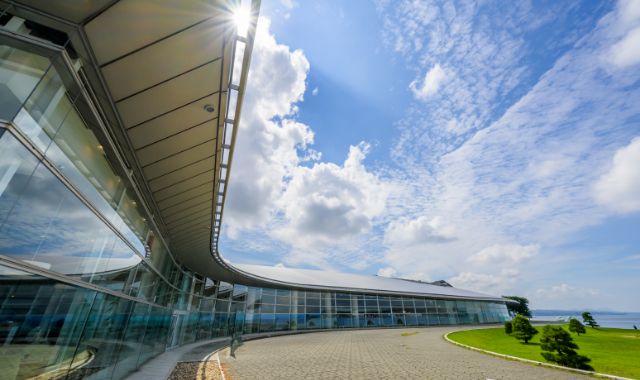
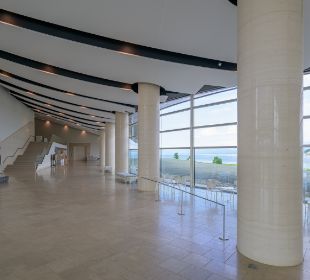
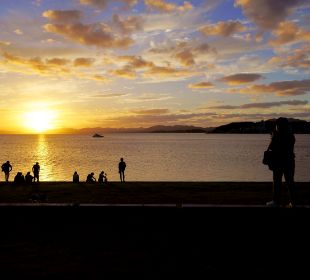
SPOT - 05
YUUSHIEN
A spacious 10,000-tsubo (approx. 33,000 m²) strolling-style Japanese garden, beautifully adorned with seasonal flowers and greenery such as peonies, irises, autumn leaves, and winter peonies.
The garden’s waterfalls and ponds are designed to represent the flow of the Hii River, which runs from the mountains through Lake Shinji and Nakaumi, eventually reaching the Sea of Japan. The central island in the pond symbolizes Daikon Island.
Highlights include the indoor peony garden “Botan no Yakata,” where peonies bloom year-round, and illumination events that make use of the garden’s natural beauty, offering something to enjoy in every season.
At the three dining venues within the garden, guests can enjoy kaiseki cuisine while taking in views of the beautiful surroundings.
The garden’s original Korean ginseng products are also highly popular, known for their health and beauty benefits.
Daikon Island, located at the center of Nakaumi Lagoon, is known for its production of peonies and Korean ginseng.
The island lies within Yatsuka Town, which is conveniently connected by road to both Matsue and Sakaiminato City in Tottori Prefecture, making access easy.
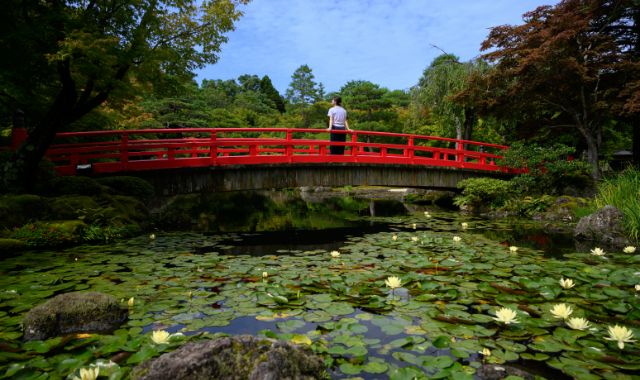
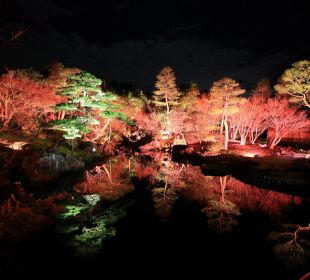
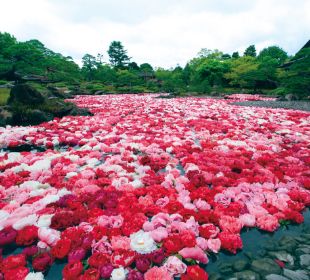
SPOT - 06
Eshima Ohashi (Steeply-sloped bridge)
Featured in a television commercial for a car manufacturer, the Eshima Ohashi Bridge—commonly known as “Beta-fumi-zaka”—quickly rose to fame for its wall-like steep incline.
Spanning Nakaumi Lagoon, the bridge connects Eshima in Yatsuka Town, Matsue City (Shimane Prefecture) with Sakaiminato City (Tottori Prefecture). Its highest point reaches approximately 45 meters, and it holds the title of Japan’s largest PC rigid-frame concrete girder bridge.
The bridge is equipped with both vehicle lanes and pedestrian walkways, making it possible to walk across as well.
On clear days, you can enjoy a distant view of Mt. Daisen, the tallest peak in the Chūgoku region, from a viewing spot near the top of the bridge.
The bridge is also a popular photo spot.
If you want to capture a similar dramatic shot to the one made famous by the commercial, the northwestern shore of Daikon Island is the recommended viewpoint.
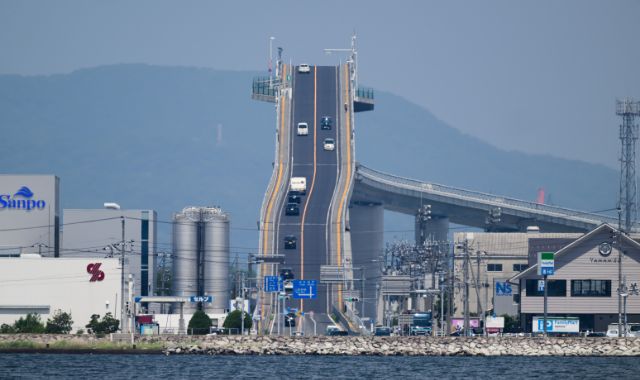
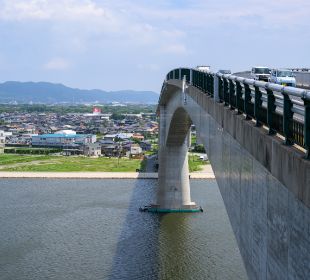
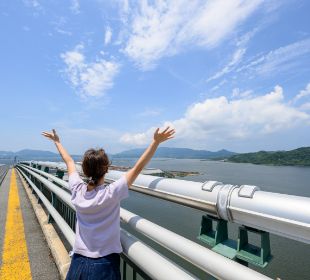
SPOT - 07
Matsue Vogel Park
A paradise of flowers and birds on the lakeshore, Matsue Vogel Park is home to one of the largest indoor greenhouses in Japan, where you can enjoy vibrant blooms such as begonias and fuchsias year-round.
Inside the park, you’ll find the “Chair of Happiness”, a bench surrounded by the flowers and fragrance of ivy geraniums.
The flower’s meaning is “true love,” and it is said that couples, families, and friends who sit together on the bench will be bound by a strong, lasting bond.
The park also features areas where visitors can feed the birds directly, offering a fun and interactive experience.
Among the most popular attractions is the sight of penguins strolling through the park, a charming and crowd-favorite event that delights guests of all ages.
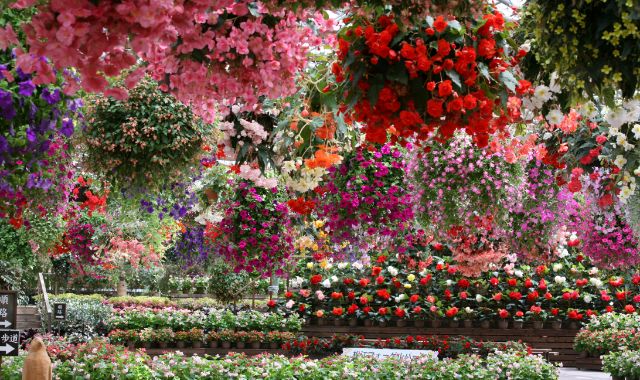
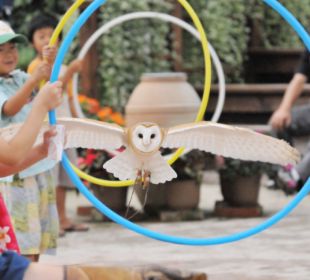

SPOT - 08
Tamatsukuriyu Shrine
Tamatsukuri Yujinja Shrine is located in Tamatsukuri Onsen, a hot spring town famous for its magatama (curved beads) and skin-beautifying waters.
At Tamatsukuri Yujinja Shrine, you'll find the revered “Negai-ishi” (Wishing Stone), believed to grant wishes when touched and prayed to.
It has long been the focus of deep faith, and many visitors come to receive a small “Kanai-ishi” (Fulfillment Stone) from the shrine office. By touching this Kanai-ishi to the Negai-ishi while making a wish, it is said that your wish will come true.
At Tamatsukuri Onsen, renowned for its skin-beautifying waters, visitors can relax and unwind at three free footbaths located throughout the town.
The area is also home to several matchmaking power spots, including the “Koikoi Ido” (Love-Welcoming Well) and the “Koikanai-bashi” (Love-Fulfilling Bridge), making it a popular destination for those seeking both healing and romance.
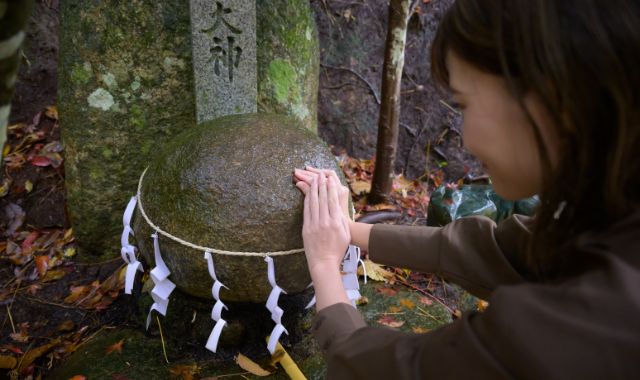
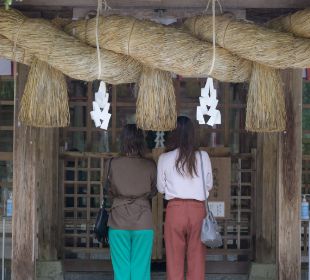
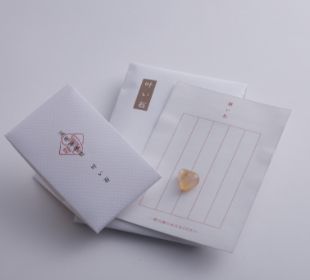
SPOT - 09
Yaegaki Shrine
Yaegaki Shrine is named after a line from an ancient poem said to be Japan’s oldest waka (short poem), composed by Susanoo-no-Mikoto after slaying Yamata-no-Orochi and deciding to build a home with Princess Inatahime:
“Yagumo tatsu Izumo yaegaki tsuma-gomi ni yaegaki tsukuru sono yaegaki wo”
(Eight clouds arise. I build an eightfold fence to enclose my beloved within—oh, that eightfold fence!)
The shrine's name and origin are deeply rooted in this poem, symbolizing protection, love, and union, and honoring the mythological couple.
A short walk behind the main hall leads to a small forest where the “Mirror Pond” (Kagami no Ike) quietly rests—a popular power spot visited by many.
Here, visitors can try a “love fortune ritual” by placing a coin on the center of a piece of washi paper and floating it on the pond. The speed and distance at which the paper sinks are said to reveal how soon—and from how near or far—your destined connection will come.
The “Migakure Shinji” ritual, held annually on May 3rd, is based on the legend that Princess Inatahime hid herself in the Inner Sanctuary during Susanoo-no-Mikoto’s battle with Yamata-no-Orochi.
During the ritual, a sacred procession with a mikoshi (portable shrine) makes its way from the main hall to the Meoto-sugi (Sacred Couple Cedars) at the Inner Sanctuary.
It is said that those who witness the procession will be blessed with a good match.
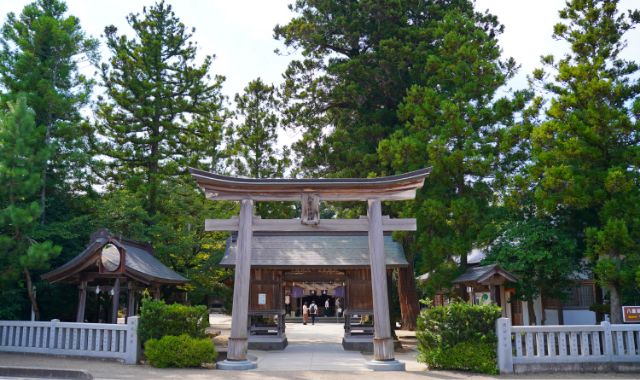
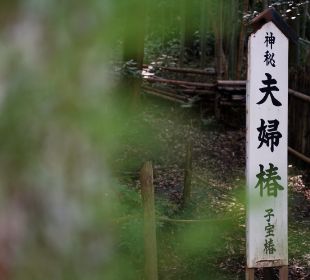
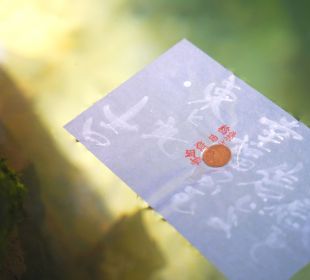
SPOT - 10
Yomotsu Hirasaka
Located in the Iya district of Higashi Izumo Town, Matsue City, this site is believed to be the boundary between the world of the living and Yomi—the land of the dead, as described in the ancient myths of the Kojiki.
Amidst the quiet woods, large rocks line the path, evoking the stone said to have sealed the entrance to Yomi, and creating a deeply mysterious and spiritual atmosphere.
Next to one of these rocks, you’ll find a small mailbox known as the “Letter to Heaven (Yomi) Post”, where visitors can send heartfelt messages to loved ones who have passed away.
In the same district, you’ll also find Iya Shrine, an ancient shrine with deep ties to Yomi, the Land of the Dead in Japanese mythology.
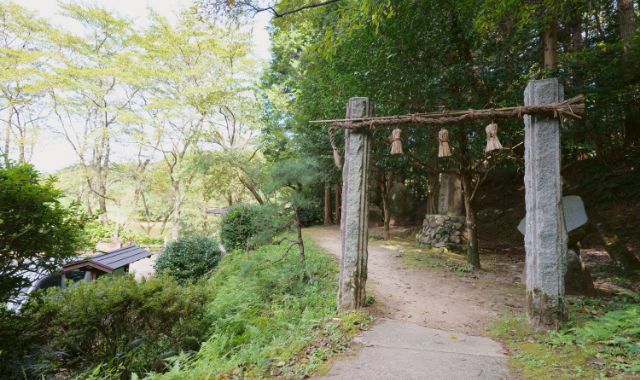
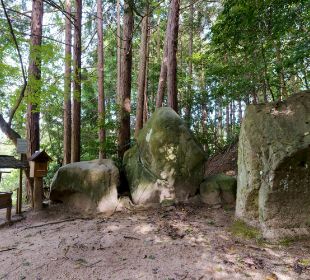
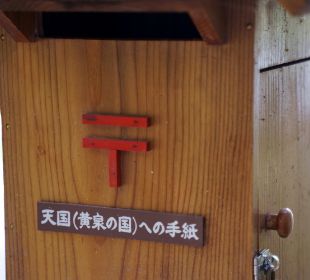
Copyright Shimane Prefectural Government and Shimane Tourism Federation All Rights Reserved.

Surrounded by nature, "Ishigami Ginzan" is a popular spot as a World Heritage Site. The townscape is full of nostalgic atmosphere, and there are many photo spots.

The Oki area, where you can experience the charm of the UNESCO World Geopark. There are many attractions to see, such as Kunigakashore, Lussuk Island, Yaosugisugi/Mudsutsugi, and the waterfall of Tantoscope.
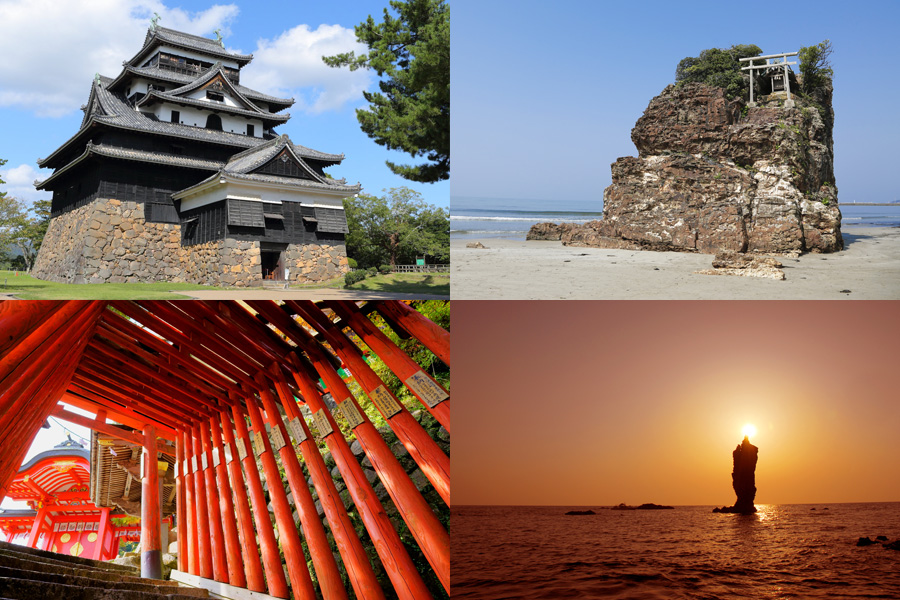
Speaking of Shimane, the strongest spot of the border, "Izumo Taisha" and the world heritage "Ishimi Ginzan" are particularly famous, but the national treasure "Matsue Castle", the garden ranking of Japan's best "Adachi Museum", the Sanyo small Kyoto "Tsuwano", and even UNESCO World
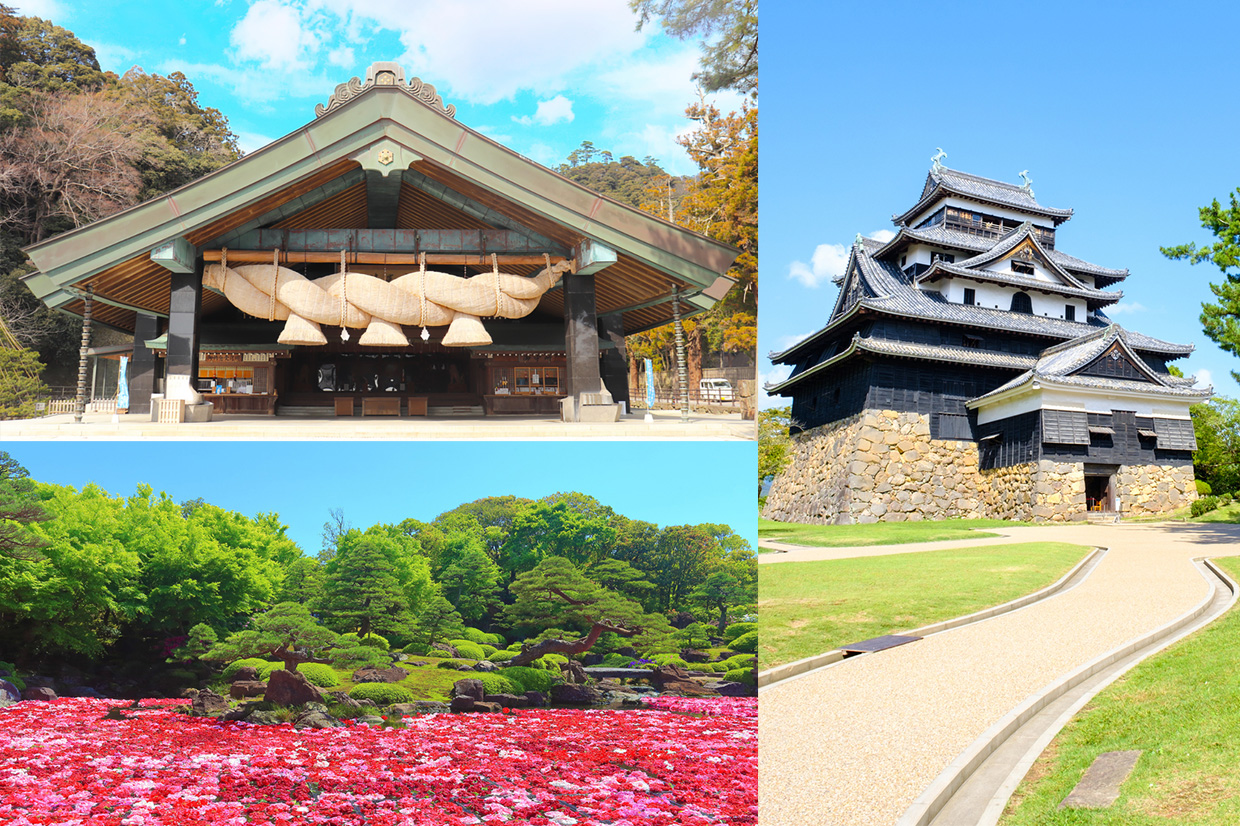
Shimane Prefecture is rich in attractions such as historic shrines and curb spots. There are many famous historical sites, hot springs, and specialty gourmets and souvenirs that can not be removed. Check the location and sights of each area and go on a trip to the country of your relationship! Matsue, Izumo
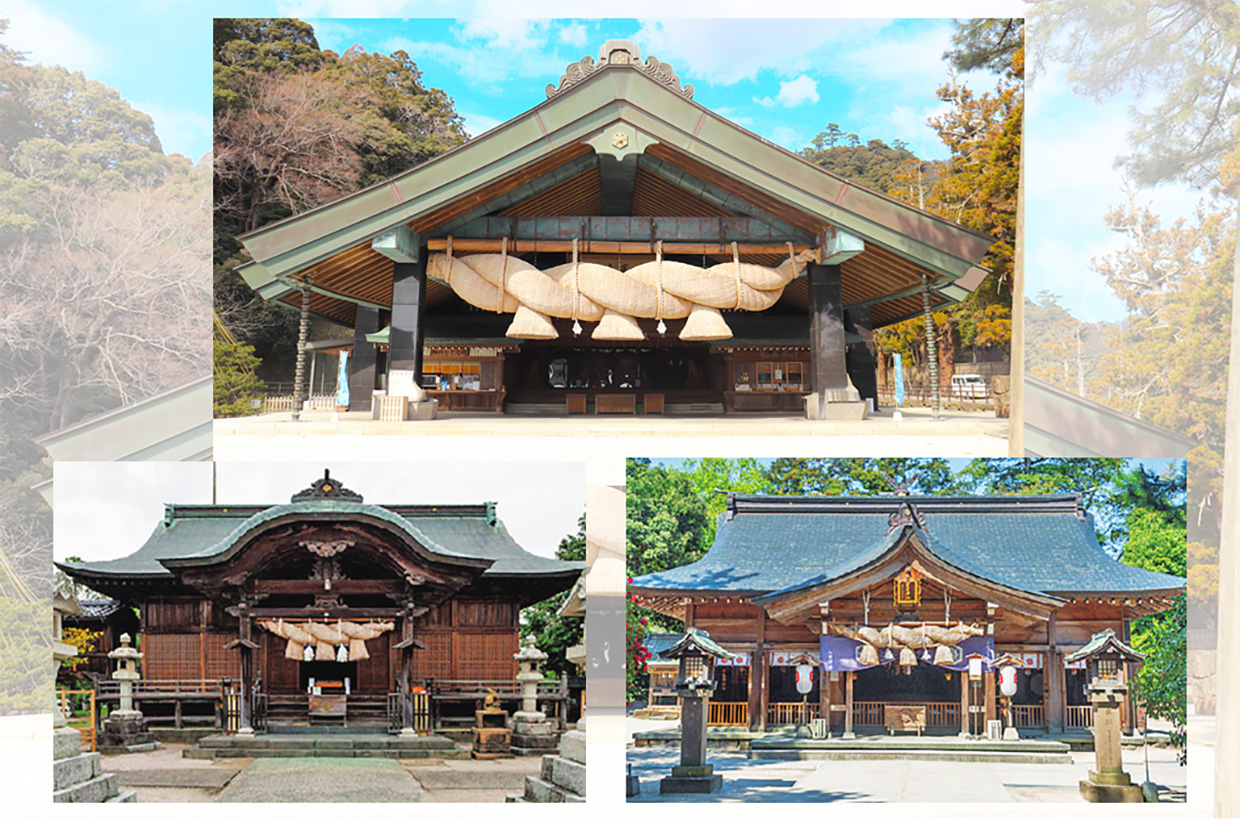
Once a year, Izumo Taisha is famous as a power spot where eight million gods from all over Japan gather to discuss various things, including the ties.
This website uses cookies so that we can provide you with the best user experience possible. Cookie information is stored in your browser and performs functions such as recognising you when you return to our website and helping our team to understand which sections of the website you find most interesting and useful.
Strictly Necessary Cookie should be enabled at all times so that we can save your preferences for cookie settings.
If you disable this cookie, we will not be able to save your preferences. This means that every time you visit this website you will need to enable or disable cookies again.
